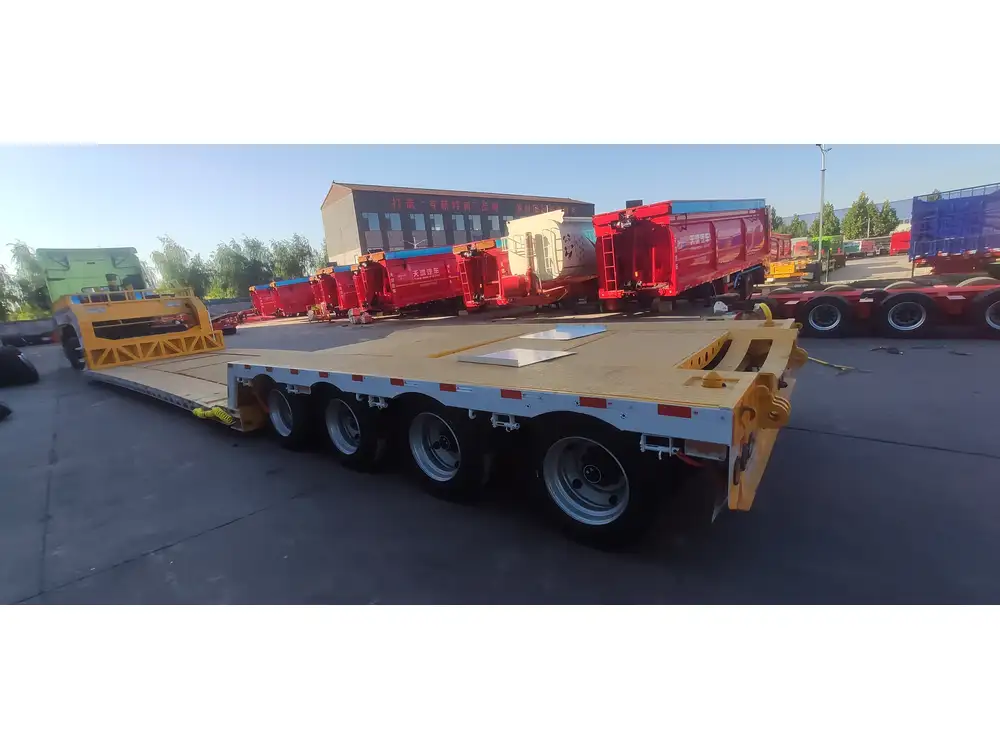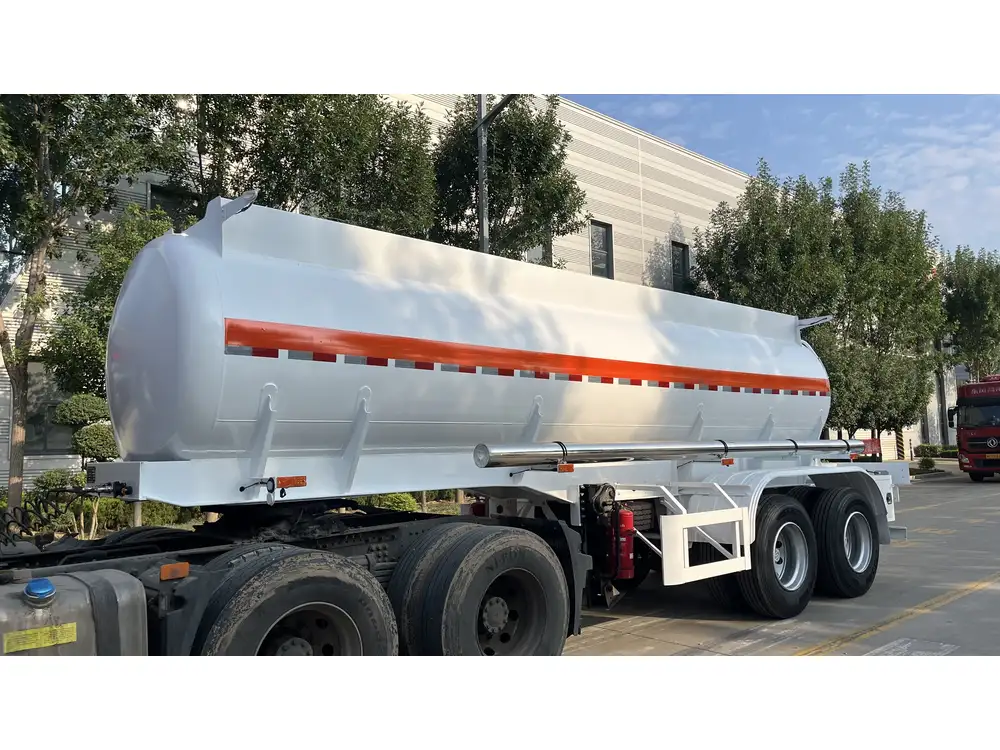In the landscape of transportation, the question, “Can a semi truck pull a fifth wheel trailer?” arises frequently among enthusiasts and professionals alike. The notion of combining these two formidable pieces of machinery captures the imagination of many who rely on heavy-duty hauling. This article explores the intricacies, capabilities, and considerations involved in such a partnership.
Understanding the Basics: Semi Trucks and Fifth Wheel Trailers
Before delving deeper, it’s essential to dissect the components involved. A semi truck, typically a heavy-duty vehicle designed for freight transport, boasts substantial horsepower and torque. Meanwhile, a fifth wheel trailer, which utilizes a specialized hitch mechanism mounted above the rear axle of the towing vehicle, offers enhanced stability and capacity for heavier loads.
What Sets Semi Trucks Apart?
| Feature | Description |
|---|---|
| Weight Capacity | Generally ranges from 30,000 to 80,000 pounds. |
| Engine Power | Typically features robust engines, often 400 HP and above. |
| Chassis Design | Designed for strength, durability, and long-haul performance. |

The Mechanics of Fifth Wheel Trailers
A fifth wheel trailer can be appealing because of its unique design. Here are some characteristics that define it:
| Feature | Description |
|---|---|
| Hitching System | Utilizes a kingpin mounted on the trailer that locks into the fifth wheel plate of the truck. |
| Stability | Offers a lower center of gravity; provides better handling than traditional trailers. |
| Cargo Capacity | Ranges from 10,000 to upwards of 20,000 pounds based on the model. |
Compatibility: Can a Semi Truck Haul a Fifth Wheel?
Yes, a semi truck can successfully pull a fifth wheel trailer. The compatibility largely depends on the specifications of both the truck and the trailer. Here are key considerations to examine:
Weight and Load Limits
Gross Vehicle Weight Rating (GVWR): A semi truck must have a GVWR that exceeds the combined weight of the truck and the fifth wheel trailer. This ensures safe and efficient handling.
Payload: It’s crucial to keep in mind the individual weight capacities. For instance, a truck with a GVWR of 80,000 pounds can easily accommodate a fifth wheel trailer that weighs 20,000 pounds.

Hitch Compatibility
Fifth Wheel Hitches: Commercial fifth wheel designs are typically rated for higher weight capacities than standard ones. You’ll want to ensure that the fifth wheel hitch installed on the semi truck can securely attach to the trailer’s kingpin.
Engine Performance
To effectively pull the weight of a fifth wheel trailer, consider the following:
| Factor | Detail |
|---|---|
| Horsepower | Look for trucks with at least 400 HP; more horsepower helps with acceleration and hill climbing. |
| Torque | A torque rating of at least 1,000 lb-ft is ideal for heavy towing. |
Benefits of Using a Semi Truck for Fifth Wheel Trailers

Enhanced Stability and Control
When comparing traditional bumper-pull trailers to fifth wheel setups, the former often lacks the stability that a fifth wheel attachment provides. This is crucial during lane changes and in windy conditions, where a semi truck’s size and weight help mitigate swaying.
Greater Cargo Capacity
Semi trucks generally hold significant towing capabilities, making them desirable for those needing to transport heavy or bulk items alongside their living quarters. This is particularly beneficial for RV enthusiasts and commercial entities.
Improved Safety Features
Many modern semi trucks come equipped with advanced safety features, like anti-lock braking systems (ABS) and electronic stability control (ESC), which further enhance safety when towing.

Versatility for Various Applications
Whether it’s for recreational purposes or commercial hauling needs, a semi truck can handle a variety of fifth wheel trailers, offering truck owners the flexibility to switch between cargo types and uses as required.
Challenges and Limitations
While the compatibility is evident, it’s important to acknowledge potential challenges when pairing semi trucks with fifth wheel trailers:
Maneuverability Issues
In tight spaces or urban settings, a semi truck and fifth wheel trailer combo may struggle with maneuverability. The longer wheelbase of a semi truck can create challenges in turning, requiring more advanced driving techniques.

Legal Regulations
Each state and country has its own regulations surrounding towing capacities, size limits, and weight distribution. Before embarking on a trip with a semi truck and fifth wheel, ensure compliance with local laws to avoid hefty fines.
Maintenance and Costs
- Maintenance Costs: Both semi trucks and fifth wheel trailers require routine maintenance, which can translate into higher costs over time.
- Fuel Efficiency: The combination of a large truck and trailer can lead to increased fuel consumption, impacting overall cost-effectiveness.
Best Practices for Successfully Towing a Fifth Wheel with a Semi Truck

Conduct Pre-Towing Inspections
Before hitting the road, it’s prudent to conduct thorough inspections of both the semi truck and the fifth wheel trailer:
- Inspect Hitches: Ensure the fifth wheel hitch is securely fastened and properly lubricated.
- Check Tires: Review tire pressure and tread for both the truck and trailer, as low pressure can lead to blowouts or reduced stability.
- Review Load Distribution: Ensure the load is balanced appropriately across the trailer to avoid swaying or loss of control.
Practice Safe Driving Techniques
Maintain Distance: Given the greater length of the truck and trailer, maintaining a safe stopping distance is paramount to avoid accidents.
Adapt to Conditions: Whether driving in snow, rain, or high winds, adjust speed and driving habits accordingly.
Utilize Technology
With advancements in towing technology, some semi trucks now come equipped with features specifically designed for towing:
- Towing Cameras: Providing critical visibility on the road and behind the trailer.
- Torque Distribution Controls: Assisting in maintaining traction during difficult driving conditions.
- Load Monitoring Systems: Helping assess weight distribution to prevent accidents.

Conclusion
In conclusion, the synergy between semi trucks and fifth wheel trailers presents an efficient solution for heavy hauling, offering versatility, control, and enhanced stability. By adhering to safety standards, understanding mechanical limitations, and leveraging modern technology, operators can maximize their towing capabilities. Engaging with this dynamic pairing empowers transportation professionals and enthusiasts alike to tackle a wide range of challenges—whether on a rugged job site, a long-haul cross-country trip, or an adventurous weekend getaway.
Careful consideration of compatibility, preparation, and operational excellence aids in ensuring that the combination of a semi truck and a fifth wheel trailer functions optimally—driving satisfaction beyond expectations.



